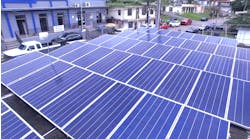The Southcoast Health and Sustainability Alliance (SHASA), an Australian organization focusing on climate change mitigation for the Eurobodalla region, has partnered with others to apply for funding to complete microgrid feasibility studies.
Last summer’s bushfires heavily impacted the Eurobodalla region, on the Southeast Australian coast, and resulted in loss of power. This has sparked the community’s interest in microgrids to increase energy resilience.
“Some towns were knocked out for months… we not only have the power go down for bushfires, but floods, high wind events; some of the towns have numerous power outages throughout the year,” Kathryn Maxwell, president of SHASA, told Microgrid Knowledge.
Eight microgrid feasibility studies
The application for over $2.3 million from the Regional and Remote Communities Reliability Fund will finance eight microgrid feasibility studies over three years. They will be selected from 16 locations identified as the most vulnerable to loss of power.
“We’ve excluded the three big towns… we’ve tried to focus on those that are vulnerable to being disconnected from the grid,” Maxwell said.
The locations also reflect a diversity of end users such as residential, businesses and tourist areas, as well as a range in size from a 24-household community up to the town of Bodalla, with over 1,000 households.
SHASA teamed up with The Australian National University and a number of other complementary organizations, including the electrical distribution networks operator Essential Energy, which faces increasing challenges in managing the network because of the rise in solar energy generation.
Improving grid stability
“They are particularly keen to look at how microgrids can improve the stability of the grid. For example, when all that solar is generating, we have batteries to store the excess, and then that can be released onto the grid during high usage times in the day,” Maxwell said.
The team also includes local contractor Micro Energy Systems Australia, which will install around 80 energy monitoring devices across the region. Software solutions provider, Zepben, will collect and analyze monitored data, aiding the final selection for the eight microgrids.
SHASA will lead on community engagement. Community groups, chambers of commerce and local businesses have already submitted more than 30 letters of support.
If the funding application is successful, SHASA expects to start work on the three-year program during summer 2021.
“We’re going to come up with an implementation plan. That means, at the end of this, we’ll have something we can grab and run with; it’s not just lots of reports and pontificating,” said Louise McFadden, SHASA coordinator.
Track news about microgrid projects in Australia. Subscribe to the free Microgrid Knowledge Newsletter.






